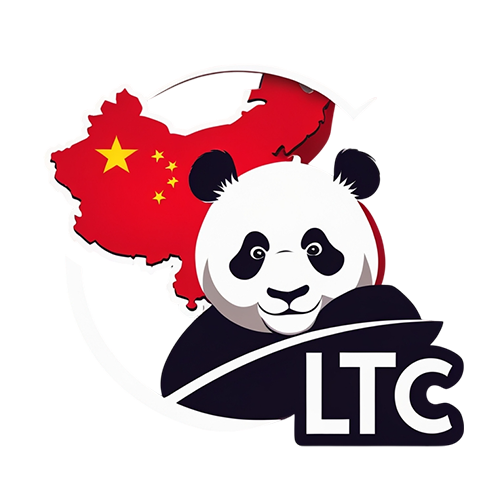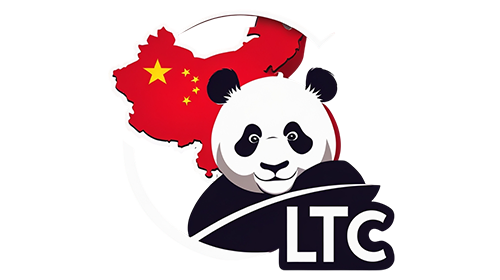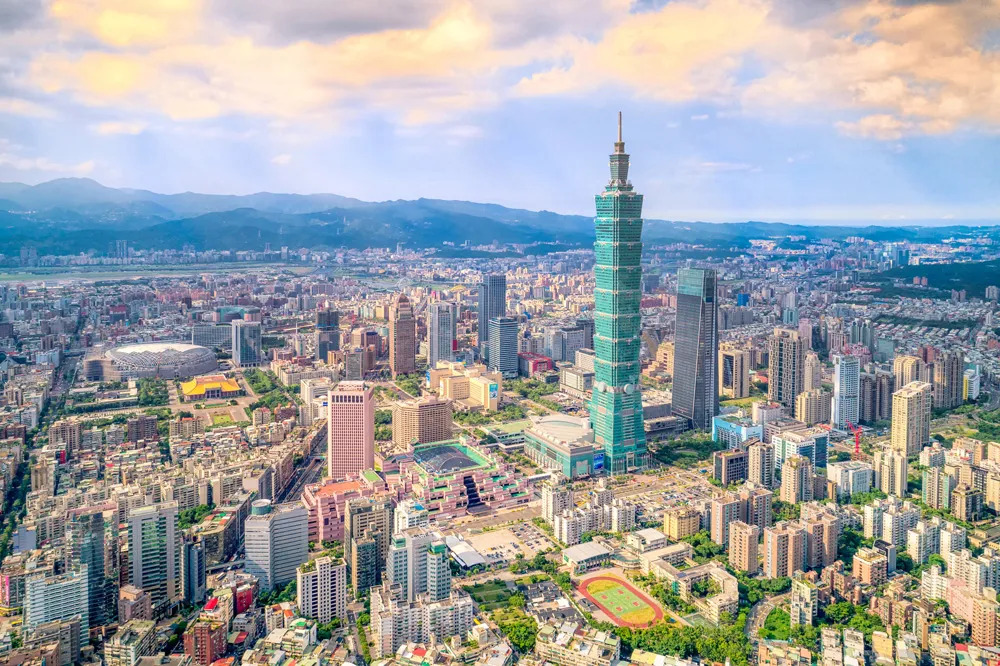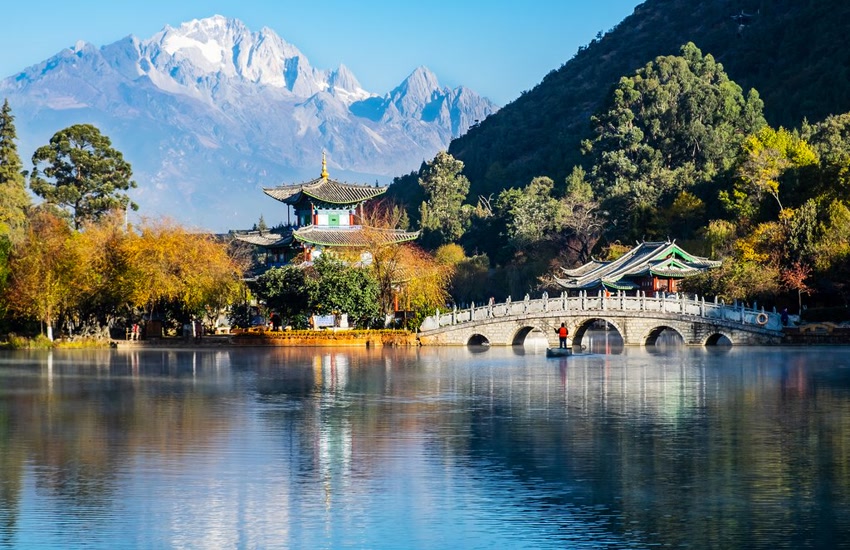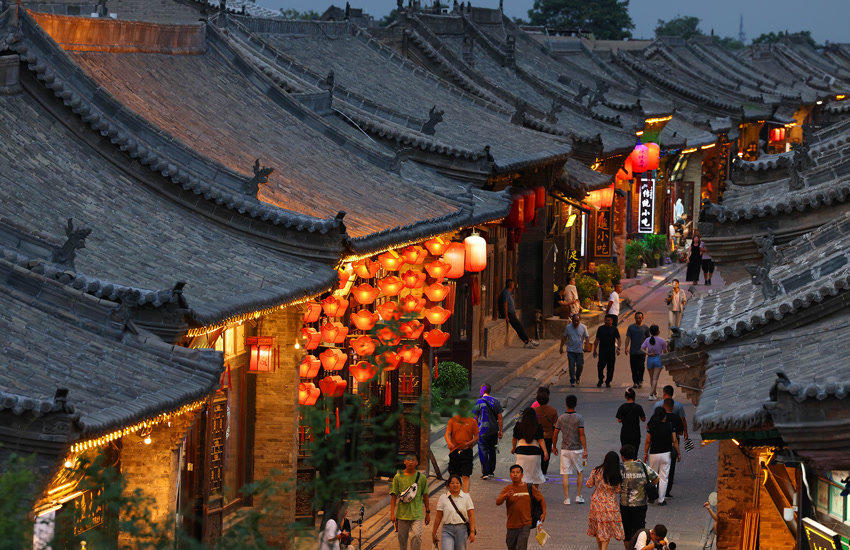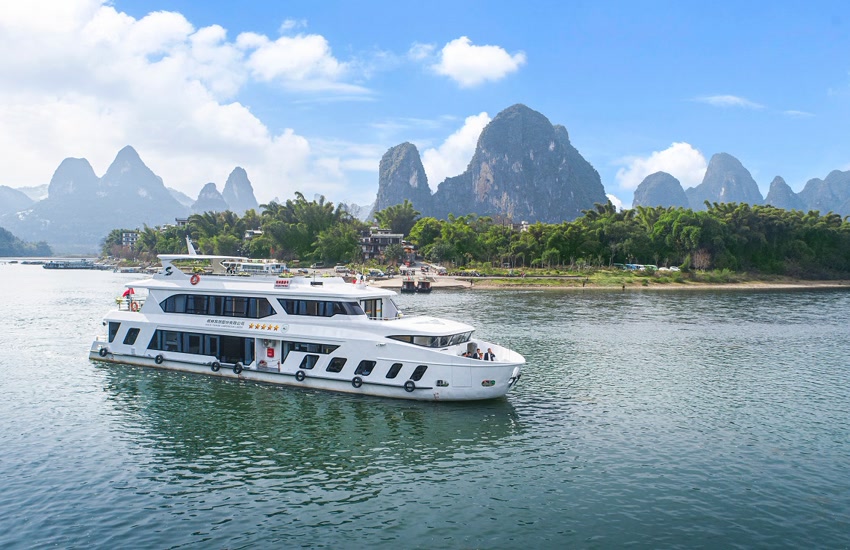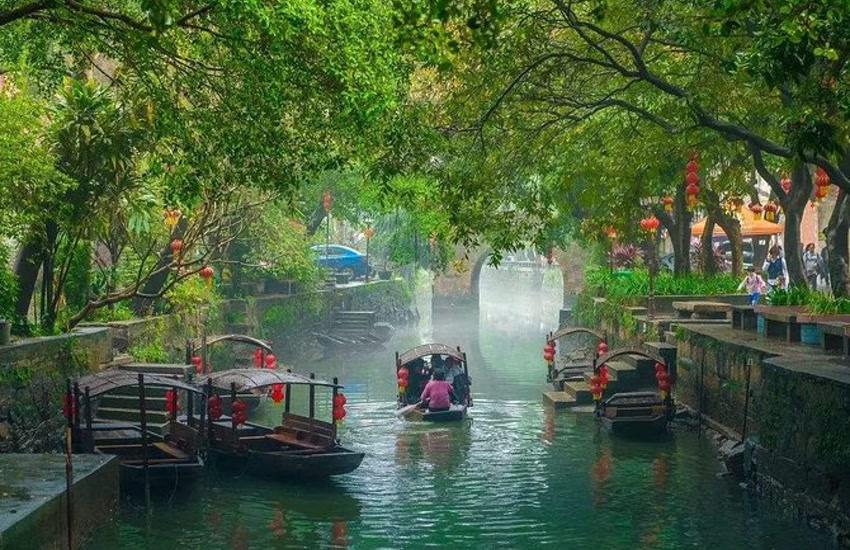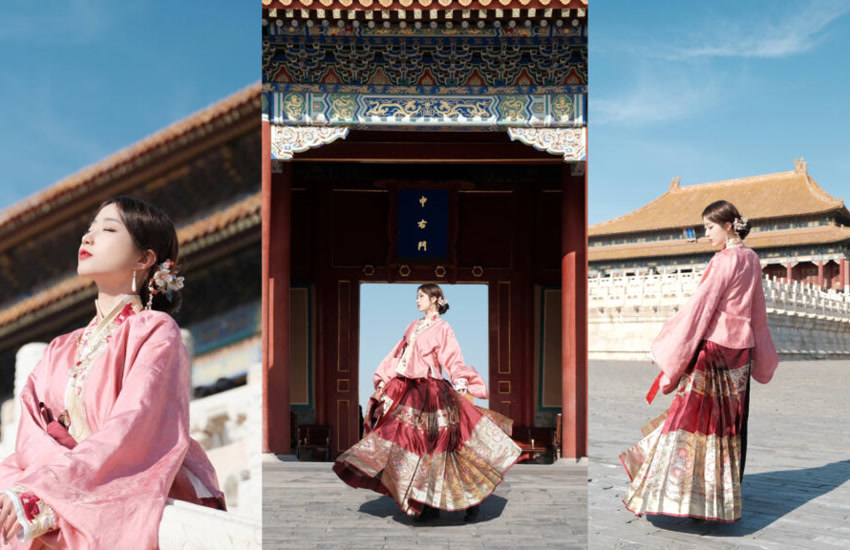
Sailing Through China’s Golden Triangle: A Compact 7-Day China Itinerary
Welcome, fellow travelers. I recently returned from an unforgettable journey through China’s Golden Triangle, and I cannot wait to share the experience with you.
This seven-day China travel itinerary took me through Beijing, Xi’an, and Shanghai. These three cities form a classic route known as the Golden Triangle, offering a powerful mix of imperial history, ancient wonders, and modern innovation. If you’re looking for a compact yet deeply immersive way to explore China, this itinerary is the perfect starting point.
Why the Golden Triangle? What Makes It Special?
The Golden Triangle is one of the most popular routes for first-time travelers to China, and for good reason. Each city showcases a different chapter in China’s story, giving you a broad and balanced view of the country’s cultural and historical landscape.
Beijing is the political and historical heart of China. From Tiananmen Square and the Forbidden City to a hike along the Great Wall of China, it offers a direct link to the country’s imperial past.
Xi’an serves as a gateway to ancient China. Home to the Terracotta Warriors and the eastern end of the Silk Road, the city brings dynastic history vividly to life.
Shanghai is China’s global showcase. Its skyline is filled with futuristic towers, its museums are world-class, and the food—especially the iconic soup dumplings—is unforgettable.
Taken together, this Golden Triangle route offers a complete and well-paced introduction to China. It fits neatly into a one-week schedule without sacrificing depth or variety.
My One-Week Golden Triangle Itinerary: A Crash Course in China
Okay, so I only had one week to explore these three incredible cities, which meant I had to be strategic with my time. Here’s how I broke it down:
Days 1–3: Beijing – Diving into History and Culture
Beijing was my first stop, and it set the tone for the entire journey. This city is a living museum, blending imperial grandeur with everyday modern life. It offers a powerful glimpse into China’s long and layered history.
I began at Tiananmen Square, a vast public plaza that holds deep symbolic importance in China. If you’re planning to visit, keep in mind that Tiananmen Square tickets or a reservation may be required in advance, especially during holidays.
From there, I entered the Forbidden City, once home to emperors for over five centuries. The entrance to the Forbidden City takes you into a world of sweeping courtyards, dragon-adorned roofs, and rooms that once held the secrets of dynasties. It is one of the most visited sites in the country for good reason.
Of course, no Beijing itinerary would be complete without a day trip to the Great Wall of China. I chose to hike the Mutianyu section, which offers well-preserved stone pathways, watchtowers, and stunning mountain views. If you’re wondering how to get to the Great Wall of China from Beijing, there are shuttle buses, private tours, or even high-speed train options to different sections, each with its own character.
After a full day of exploring, I treated myself to a traditional Peking duck dinner. The crispy skin, tender meat, and sweet Beijing duck sauce were unforgettable. Expect to pay around 150 to 250 RMB depending on the restaurant, but it is worth every yuan. If you’re curious what to eat in Beijing, this is the perfect place to start.
Beijing’s historical weight is real, but it never feels outdated. The blend of ancient landmarks and dynamic street life makes it one of the most rewarding places to begin any China travel itinerary.
Check out our guide on Beyond the Forbidden City: Uncovering the Best Things to Do in Beijing, China.
Check our guide to eat beijing duck: Unfolding the Legacy of Peking Duck A Gastronomic Tale from Beijing
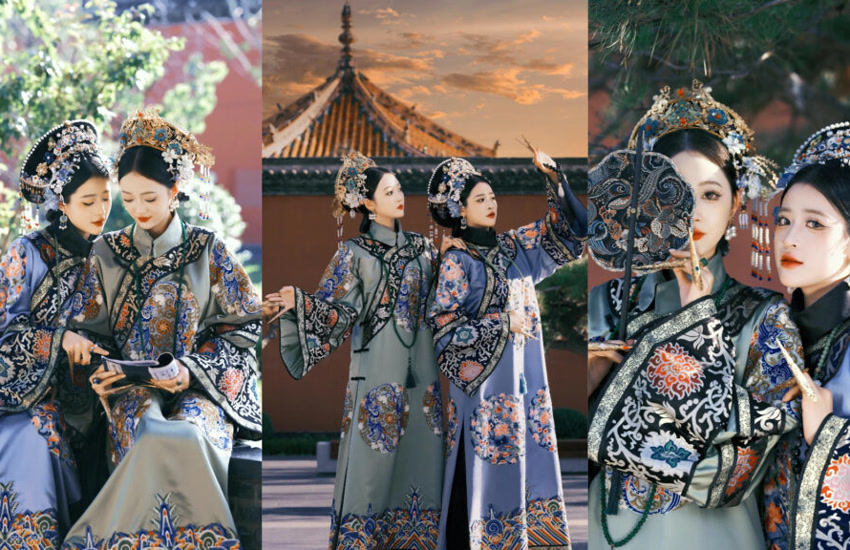
Days 4-5: Xi’an – Unearthing Ancient Wonders
From Beijing, I boarded a high-speed train and was in Xi’an in just a few hours. The efficiency of China’s rail system continues to impress me, and this leg of the journey was no exception.
Xi’an once served as the eastern terminus of the ancient Silk Road and the capital of multiple dynasties. Walking its streets, especially inside the old city walls, you feel the historical weight everywhere — from ancient watchtowers to the call of market vendors selling traditional crafts.
The undeniable highlight was visiting the Terracotta Warriors, one of the most famous archaeological discoveries of the 20th century. Seeing the vast underground army in person is staggering. Each figure is life-sized, with unique facial features and armor. If you’re planning your visit, check the official site for the Terracotta Warriors entrance fee, which can vary slightly depending on the season. You can also find information on how to buy tickets for the Terracotta Warriors online or through local tour offices.
This site is often referred to as the Xi’an Terracotta Warriors Museum, and it’s located about an hour outside the city center. Plan at least half a day for the round trip and visit. It’s worth every minute.
If you’re wondering about the best time to visit Xi’an, spring and autumn offer mild temperatures and fewer crowds. After the museum, I explored the Muslim Quarter in the old city, where I sampled hand-pulled noodles, grilled lamb skewers, and picked up a few souvenirs from China that were far more unique than anything I’d seen in bigger cities.
These two days in Xi’an offered a powerful contrast to both Beijing and Shanghai. Where Beijing feels regal and Shanghai feels futuristic, Xi’an speaks quietly and confidently through its layered history. It’s a perfect middle chapter in any well-paced 7-day China itinerary.
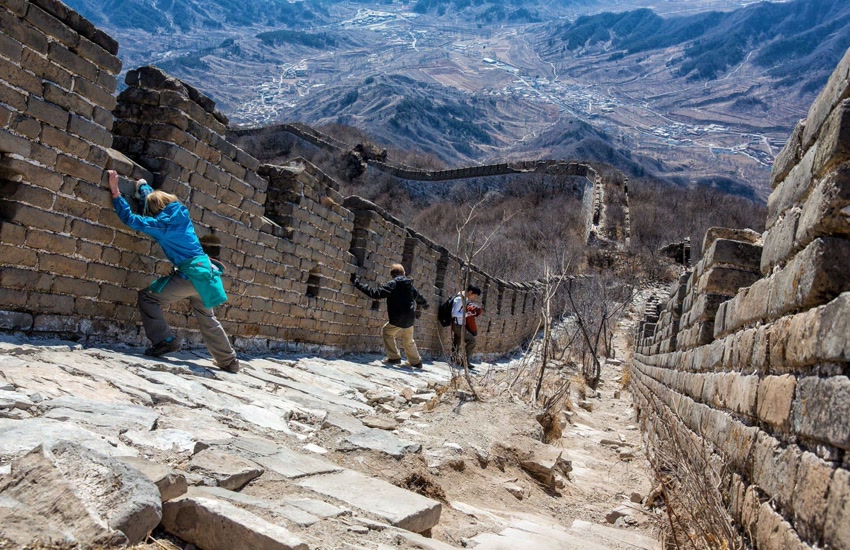
Days 6-7: Shanghai – Embracing the Future
From Xi’an, I caught another high-speed train to Shanghai, and the contrast was immediate. Sleek glass towers, flashing LED billboards, designer shops, and street food stalls all exist side by side in this vast and electric city.
I started my time here with a walk along The Bund, the famous waterfront promenade with spectacular views of the Pudong skyline. This was followed by a ride up one of the observation decks in Lujiazui, which offered some of the most memorable cityscapes I’ve ever seen.
No Shanghai travel itinerary would be complete without diving into the local cuisine. I headed straight for a traditional restaurant to try the iconic soup dumplings Shanghai is known for. Steamed to perfection and bursting with flavor, these were hands-down one of the best meals of the entire trip.
For those planning a longer stay or looking for in-depth exploration, a private tour of Shanghai can be a great way to go beyond the tourist circuits. Otherwise, the subway system is fast, safe, and easy to navigate even for solo travelers in China.
I also spent a morning browsing a few of the best Shanghai museums, including the Shanghai Museum of Art and the Museum of Urban Planning. Between these and the endless shopping streets, it’s easy to lose track of time. If you’re wondering what to buy in Shanghai, look out for silk scarves, calligraphy sets, and contemporary design items that make excellent China souvenirs.
For tech-savvy travelers, this is also a good time to link your credit card to Alipay, or even add a second number to your WeChat account for smoother app access across services. Shanghai is built for digital convenience.
As I wrapped up my final night with a rooftop cocktail and one last look at the glowing skyline, I realized just how much ground this compact Golden Triangle China itinerary had covered. From imperial Beijing to ancient Xi’an and now modern, cosmopolitan Shanghai, the journey felt both complete and only just beginning.
Check out our guide on The allure of Shanghai from modern marvels to ancient alleys.
Tips and Tricks for Your Golden Triangle Adventure
Make your trip to the Golden Triangle as smooth as possible with these handy tips:
- Visas: Make sure you have the necessary visa for China before you travel. The process can take some time, so apply well in advance.
- Language: While English is spoken in some tourist areas, it’s helpful to learn a few basic Mandarin phrases. Download a translation app on your phone to help you communicate.
- Transportation: High-speed trains are the best way to travel between Beijing, Xi’an, and Shanghai. They’re comfortable, efficient, and affordable. Book your tickets in advance, especially during peak season.
- Accommodation: Choose hotels that are centrally located and close to public transportation. This will make it easier to explore the city.
- Food: Be adventurous and try the local cuisine! From Peking duck in Beijing to dumplings in Xi’an and soup dumplings in Shanghai, the food is a highlight of any trip to China.
- Bargaining: Don’t be afraid to bargain when shopping in markets. It’s part of the culture!
- VPN: If you want to access social media and other websites that are blocked in China, you’ll need to use a VPN. Download and set it up before you arrive.
- Be prepared for crowds: China is a popular tourist destination, so be prepared for crowds, especially at major attractions.
Final Thoughts: My China Golden Triangle Experience
My whirlwind adventure through China’s Golden Triangle was an unforgettable experience. I was amazed by the country’s rich history, vibrant culture, and modern marvels. It’s a destination that truly has something to offer everyone.
If you’re looking for a taste of China, I highly recommend planning your own Golden Triangle adventure. It’s a fantastic way to experience the best of the country in a relatively short amount of time. And who knows, maybe you’ll be as hooked as I am and start planning your next trip back to explore even more of this fascinating country!
So, what are you waiting for? Start planning your China adventure today! And don’t forget to share your experiences with me in the comments below. I’d love to hear about your travels! Happy travels!
Discover our others itineraries guide:
